Ian Kennedy, product manager for MyBlogLog at Yahoo, was a great moderator for this panel on how to do audience measurement of widgets. The writeup of this session tantalized us with talk of new “engagement metrics” — though little new was revealed, despite the moderator’s atempts to drag something out of the panelists. 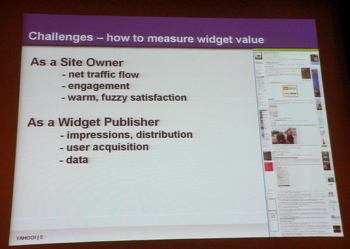
We did learn, however, from Jeff Gillis, that Google will drop us a piece of news on us Tuesday via his analytics blog — he said 12 pm, and that would appear to mean noon, since nothing’s there yet.
Hooman Radfar, founder of Clearspring, kicked things off with a commercial about his widget platform and distribution service. He said more than 75 brands are now using it, and “thousands of developers.” He also said his is the only company that provides real-time metrics. Clearspring’s original engine was built with RockYou, said Radfar, “which is the largest widget provider in the world.” He said a new metric Clearspring has is “placement,” so you can track the sites where your widget is appearing. Looking forward, Radfar said his firm will be at Launchpad in November to introduce its new “open platform.”
Introduced next was Eyal Magen, founder of Gigya, who said his widget distribution network is used by 7 of the top 10 widget sites, and that it’s only a “30-minute integration.” He said what’s new from his firm are “Widget Usage Reports.” 
Google Analytics’ Jeff Gillis followed with his hint-hint, wink-wink, that he’d have news on his blog on Tuesday. (He couldn’t have dropped the news on us on Monday? The team must be working all night….) He said we could sign up for the beta with a secret code, only for attendees. (Yeah right — ask me if you want it.)
Moderator Kennedy popped the big question at this point, “What do each of you have for measuring interactions within a widget?” Stunned silence. Gillis rambled about how Urchin Tracker measures “15 dimensions.” But what about interaction within the widget, Kennedy repeated, “like tracking which specific buttons users are clicking on.” No, Gillis said, they’re not able to do that. Clearspring’s Radfar saw an entry here to say “we have ‘interaction analytics’ coming out.” No word of when. He said they “won’t be dependent on Flash.” He also admitted there are other things as well that aren’t being measured yet, including “viral spread and most popular,” among others.
Are there any best practices yet, asked Kennedy, regarding placement of a widget on a site? After all, “there’s a whole science of where best placement is in other media” — certainly for print, to name one. Google’s Gillis said it’s too early, but eye-travel studies (the so-called heat map) show an “F” pattern, which would suggest left-side placement as best. Gigya’s Magen said something to suggest that top placement might be good. Clearspring’s Radfar commented to just “keep it simple….people have a tendency to cram a whole web site in a widget.” He also stressed a key point: that advertisers expect different metrics than publishers. Gillis said it’s “user-specific metrics” that many want.
“Where will we be in a year?” asked moderator Kennedy. “Will we have a definition of ‘engagement metrics’?” Google’s Gillis: “The term can mean many different things to different web sites.” Radfar: “A big issue will be how are you going to collect data in a non-intrusive way?” Moderator Ian Kennedy closed the panel with a take of his own: “People will want to measure direct revenue and indirect revenue.” Ah, the elusive monetization. More on that later.
UPDATE (10/16, 10:30 am Pacific): This just in, as promised — the latest Google Analytics news. Now I know why they held it till today….there’s an eMetrics event in Washington, DC, where they’re making this multi-part announcement.
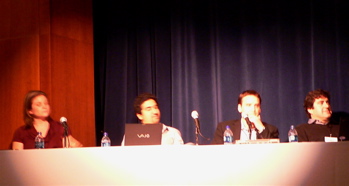
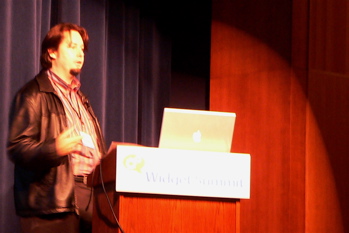

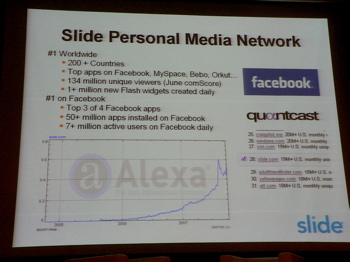
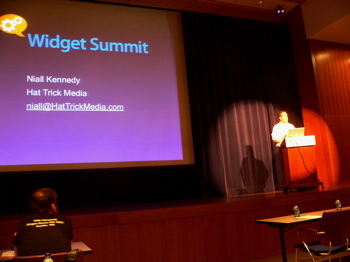

Recent Comments